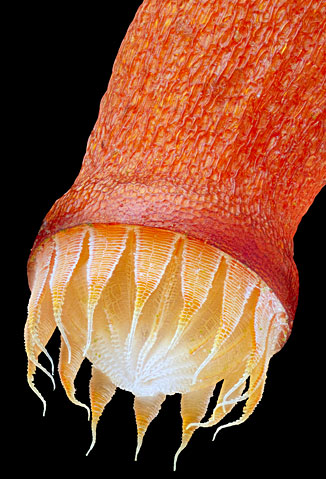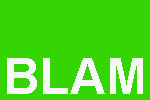Makrofotografie mit mehr als 5-facher Vergrößerung - Nachtrag Oktober 2014
Handelsübliche Makroobjektive für Spiegelreflex- (DSLR) oder Systemkameras ermöglichen, in Kombination mit Zwischenringen oder Balgenauszügen, maximal eine rund 5fache Vergrößerung des Objektes auf dem Film bzw. Bildsensor zur Darstellung kleinster Details.
Mit Lupenobjektiven anstelle der Makroobjektive kommt man bis jenseits 10facher Vergrößerung, aber oft ist die dabei erreichte Bildqualität unbefriedigend. Alle verwendeten Komponenten müssen gut aufeinander abgestimmt sein, auch die Reihenfolge der Bildbearbeitungsschritte bestimmt das Ergebnis mit.
Viele werden die hervorragenden Makrofotos von Moosen unseres englischen Kollegen Des Callaghan bereits kennen (externer Link zur Callaghan-Website).

Die von ihm verwendete Apparatur ist hier dargestellt, das damit aufgenommene Peristom von Bryum capillare ebenfalls zu sehen. Klicken auf die Bilder öffnet eine größere Version bzw. führt zur Website von Des Callaghan.
Er beschreibt seine Apparatur wie folgt: "You asked about the set-up. I remember I made some notes last year, which I’ve added to below. The image shows a slightly older version of the set-up, though the present one is essentially the same.

By Des_Callaghan (Own work) [BY-SA 4.0]
- Stackshot controller coupled to (2)
- Stepper motor coupled to the fine-focus knob of the microscope via a DIY gear-and-pulley system
- Olympus BX51 microscope
- 2x Manfrotto Hydrostat Arms
- Canon Macro Twin Lite MT-24EX
- Diffusers for flash heads (no longer used)
- Pieces of polystyrene cup (act as light diffusers)
- Camera adapter (eBay Item No 111049182946), which allows direct projection from the microscope objective onto the camera sensor (i.e. no need for a relay lens)
- Canon 600D/T3i camera
- Cable connection from microscope to computer running Canon EOS Utility (allows control of the camera from the computer and sends images from the camera straight to the computer hard drive)
- Vibration isolation platform (www.herz-f.co.jp) (I’m not sure if this is really needed with flash photography)
The microscope objectives that I use for the reflected light photographs are from the Olympus LMPlanFl range. The set-up sends the RAW files to my laptop via the EOS Utility software. I then load them into Lightroom and delete any unnecessary frames. From Lightroom, I send them to the stacking software (Zerene Stacker), which converts them to 16-bit tiffs. The final stacked image (16-bit tiff) is then loaded into Photoshop for improvement, including levels, colour and, as far as possible, removing halos. Finally, I apply noise reduction with Topaz DeNoise, sharpen with Topaz Detail and convert to jpg. A single image, from start to finish, usually takes several hours, not including those I sometimes abandon half-way through!"





